You deserve a wristwatch that fits perfectly, enhancing both your style and comfort. But have you ever struggled with finding the right size for your wrist? Fear no more! In this article, you will discover a simple yet effective guide on how to properly size a wristwatch. From measuring your wrist to understanding case diameters and strap lengths, we’ll walk you through the process step by step. Say goodbye to ill-fitting timepieces and embrace the confidence of wearing a watch that’s just right for you!
Understanding Wrist Watch Sizing
When it comes to wrist watches, size matters. Finding a watch that fits your wrist perfectly is not only essential for comfort but also for style. Wearing a properly sized watch not only enhances your overall appearance but also ensures that it functions optimally. In this comprehensive guide, we will delve into the importance of proper watch sizing, factors to consider when choosing the right size, and how to measure your wrist accurately. So, grab your measuring tape or string and let’s get started on your journey towards a perfectly sized wrist watch!
Importance of Proper Sizing
Proper sizing of your wrist watch is crucial for various reasons. First and foremost, a properly sized watch ensures optimal comfort. You wouldn’t want a watch that feels too tight or one that constantly slides up and down your arm. By choosing the right size, you can avoid any discomfort caused by an ill-fitting watch. Additionally, a well-fitted watch enhances your overall style and fashion sense. It symbolizes attention to detail and showcases your elegance or sporty personality, depending on the occasion.
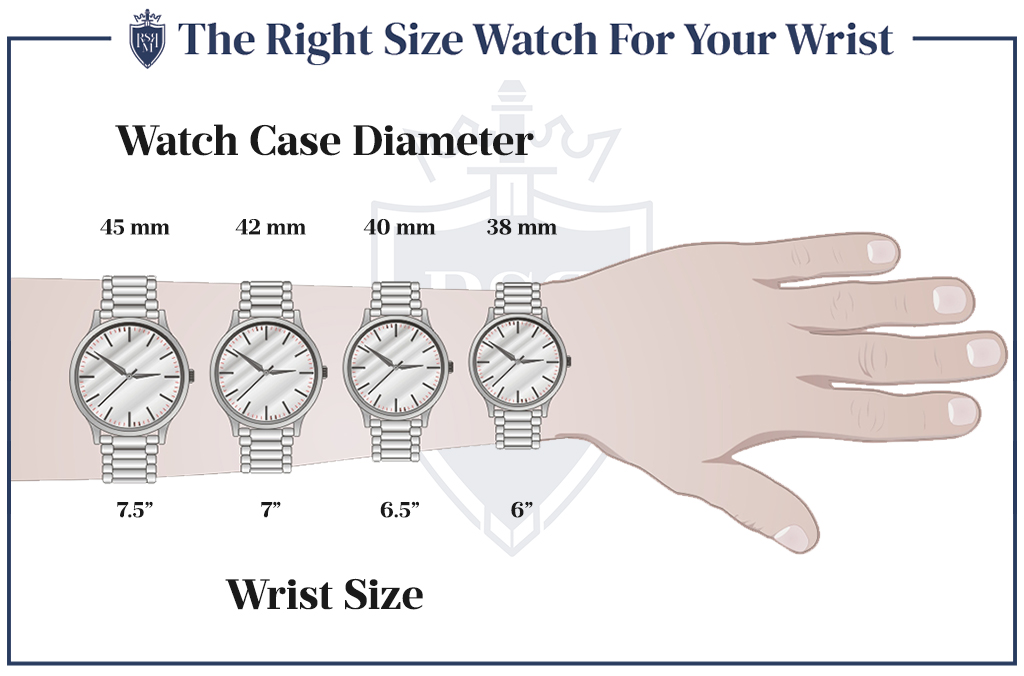
Factors to Consider
Before diving into the measurement process, it’s important to consider a few factors that may affect your choice of watch size. Firstly, consider the proportions of your wrist. A larger wrist may require a bigger watch case to maintain a balanced look, while a smaller wrist may require a more delicate timepiece. Secondly, think about the type of watch you prefer. Dress watches typically have smaller case sizes, while sports watches tend to be bulkier. Lastly, consider your personal style preferences. Do you like the sleekness of a smaller watch or the statement-making impact of a larger timepiece? Keeping these factors in mind will help you make an informed decision when it comes to watch sizing.
Measuring Your Wrist
To ensure the perfect fit, it’s crucial to measure your wrist accurately. There are a few methods you can use to achieve this.
Using a Wrist Measuring Tape
If you have access to a wrist measuring tape, this is one of the easiest and most accurate ways to determine your wrist size. Simply wrap the tape around your wrist, just below the wrist bone, where you would typically wear a watch. Ensure that the tape is snug but not too tight. Read the measurement in either inches or centimeters, depending on the units marked on the tape.
Using a String or Paper Tape Measure
If you don’t have a wrist measuring tape, fear not! Grab a piece of string or a paper tape measure and follow these steps. Wrap the string or tape measure around your wrist, just below the wrist bone, without pulling it too tightly. Mark the spot where the string or tape measure overlaps and lay it flat on a ruler. Record the measurement in inches or centimeters.
Taking Measurements
Once you have taken your wrist measurement, it’s essential to add some extra length to accommodate the size of the watch case and allow for a comfortable fit. A good rule of thumb is to add approximately 0.5 to 0.75 inches (1.27 to 1.91 centimeters) to your wrist measurement. This additional length will give you enough room for movement and prevent the watch from feeling too tight.
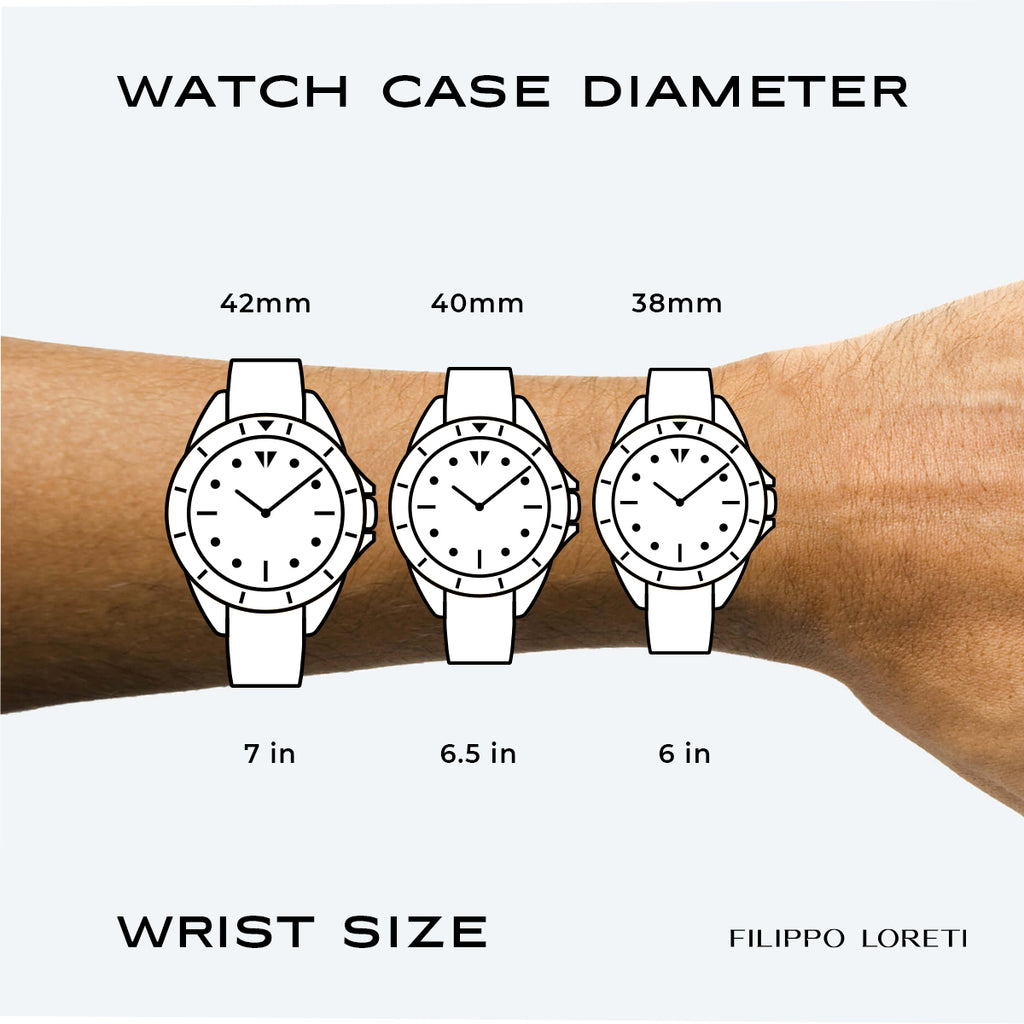
Determining the Watch Case Size
Understanding the watch case size is equally important when it comes to finding the perfect fit for your wrist. The watch case size refers to the diameter of the watch, usually measured in millimeters. It determines the overall look and proportion of the watch on your wrist.
Measuring the Case Size
To measure the watch case size, you need to determine the diameter of the watch. Using a ruler or measuring tape, place the watch face down on a flat surface. Measure from one side of the case to the opposite side, excluding the crown. Record this measurement in millimeters. Additionally, pay attention to the lug width, which is the distance between the lugs where the strap or bracelet is attached. Make sure the strap or bracelet you choose has a compatible lug width to ensure a seamless and secure fit.
Choosing the Strap or Bracelet
Once you have your wrist measurement and watch case size, it’s time to choose the strap or bracelet that best suits your style and comfort preferences. There are various types of watch straps available, each with its own unique characteristics.
Types of Watch Straps
Leather straps offer a classic and sophisticated look, suitable for dress watches or formal occasions. They come in various colors and styles, allowing you to personalize your watch. Metal bracelets are a popular choice for sports or everyday watches, as they offer durability and a bold statement. NATO straps are made from nylon and are known for their strength and versatility. They are often seen on military-style watches and can be easily interchanged. Lastly, rubber straps or silicone bands are often found on diver or sports watches, providing flexibility and resistance to water.
Selecting the Strap/Bracelet Length
Along with the type of strap or bracelet, it’s crucial to select the appropriate length. The length varies depending on your wrist size and personal preferences. Most straps or bracelets come in standard lengths that can be adjusted, but it’s important to choose one that allows for a secure and comfortable fit. If you opt for a metal bracelet, the watch should fit snugly on your wrist without pressing into your skin. If you choose a leather or fabric strap, make sure it has enough punch holes to accommodate various wrist sizes and fits comfortably on your wrist.
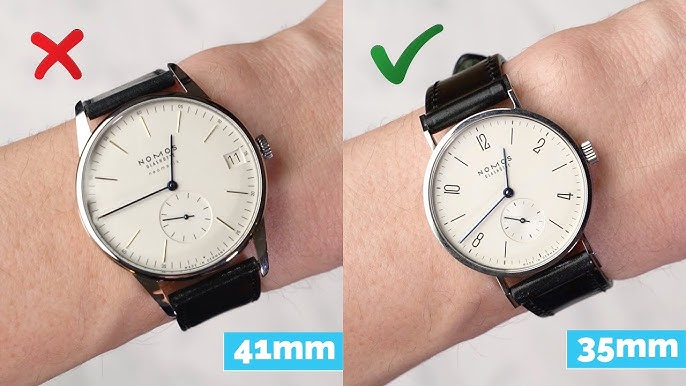
Adjusting the Strap/Bracelet Length
In some cases, you may need to make adjustments to the strap or bracelet length to achieve the perfect fit. Here are a couple of methods you can use:
Using a Link or Pin Removal Tool
For metal bracelets with links, you can use a link removal tool or take it to a professional jeweler to remove or add links. This allows you to customize the fit according to your wrist size. Make sure to remove an equal number of links from both sides of the bracelet to maintain balance.
Using Adjustable Buckles or Clasps
Some straps or bracelets come with adjustable buckles or clasps, allowing you to fine-tune the fit. These buckles or clasps often have various settings or notches, enabling you to find the ideal length. Experiment with different settings until you achieve a comfortable and secure fit.
Getting Professional Help
If you feel unsure about measuring your wrist or adjusting the strap/bracelet on your own, don’t hesitate to seek professional help. Visiting a watch store or jeweler can provide you with expert assistance and ensure that your watch is sized correctly. They can measure your wrist accurately and recommend the appropriate strap or bracelet length for your watch type and style.
Seeking Advice from a Watch Specialist
In addition to visiting a watch store or jeweler, you can also seek advice from a watch specialist. Watch specialists are knowledgeable about different watch brands and models, including their specific sizing requirements. They can guide you in choosing the right watch size and style that suits your wrist and personal preferences.
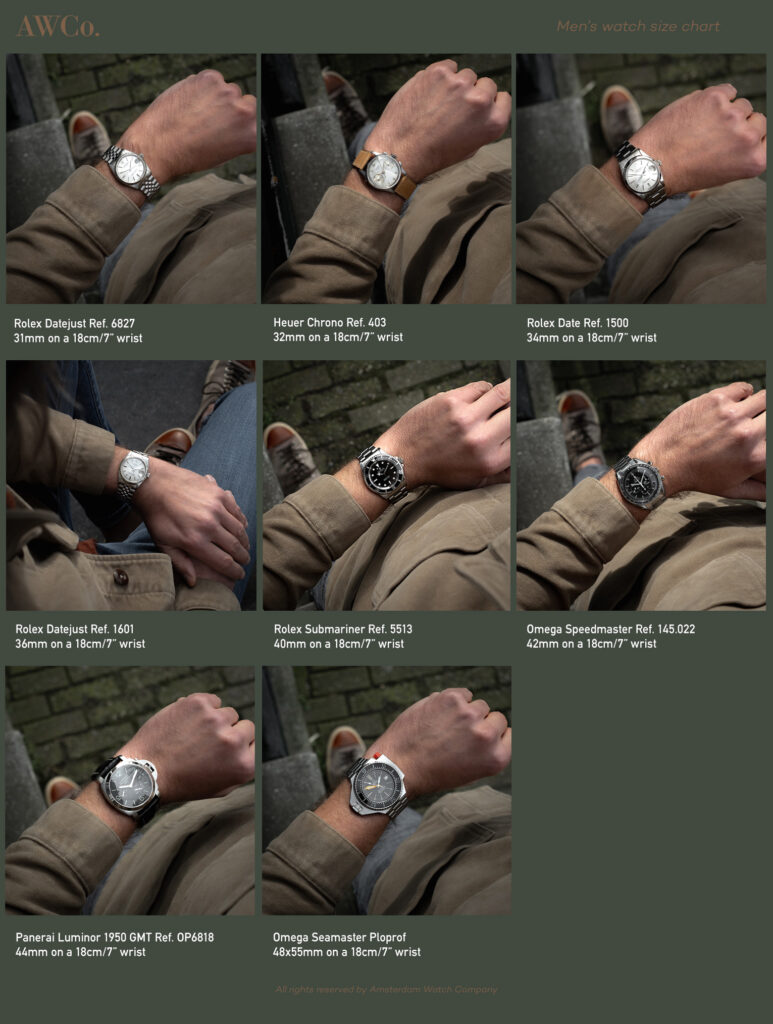
Considering Watch Style
While sizing is crucial, it’s also important to consider the style of the watch and how it complements your overall look. Different watch styles cater to different occasions and fashion preferences. Let’s explore a few popular categories:
Dress Watches
Dress watches are typically characterized by their elegant and minimalist designs. They are meant to be worn on formal or special occasions, where subtlety and refinement are valued. Dress watches tend to have smaller case sizes, ranging from 36mm to 40mm, making them perfect for those with smaller wrists or those who prefer a more understated look.
Sports Watches
Sports watches are designed with durability and functionality in mind. They often feature larger case sizes, ranging from 40mm to 46mm, to accommodate additional features such as chronographs or dive bezels. Sports watches are versatile and can be worn for various activities, from outdoor adventures to casual everyday wear.
Fashion Watches
Fashion watches encompass a wide range of styles and designs, catering to different fashion trends and personal tastes. They can come in a variety of case sizes, depending on the brand and style. Fashion watches often prioritize aesthetics and make a bold statement with their vibrant colors, unique shapes, and intricate detailing.
Tips for a Perfect Fit
Now that you understand the importance of proper wrist watch sizing and have learned how to measure your wrist accurately, let’s delve into some tips for achieving a perfect fit:
Leave Some Wiggle Room
While it’s important to wear a watch that fits snugly on your wrist, it’s equally crucial to leave some wiggle room. A watch that is too tight can restrict blood flow and cause discomfort. Aim for a comfortable fit that allows for a small amount of movement without sliding up and down your arm.
Consider Watch Weight and Balance
The weight and balance of the watch can have a significant impact on your comfort level. Heavier watches may require a slightly looser fit to prevent strain on your wrist. Conversely, lighter watches may feel more comfortable with a slightly tighter fit. Pay attention to the weight of the watch when making your sizing decisions.
Avoid Extreme Tightness
While it may be tempting to wear your watch as tight as possible to prevent it from moving, avoid extreme tightness. A watch that is too tight can leave marks on your wrist, hinder circulation, and cause discomfort. Find a balance between a secure fit and a comfortable wearing experience.
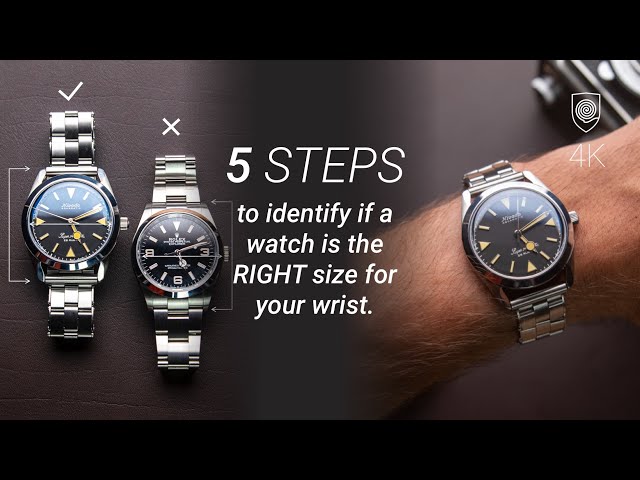
Watch Sizing Troubleshooting
Even with proper measurements and careful consideration, you may encounter some issues with watch sizing. Here are a couple of troubleshooting tips for common problems:
Resolving Tightness Issues
If you find your watch is too tight even after adjusting the strap or bracelet, you may need to consider purchasing additional links for a metal bracelet or opting for a longer strap. Alternatively, consult a professional to explore other sizing options or potential solutions.
Addressing Loose Fit
In the case of a loose-fitting watch, there are a few solutions you can consider. You can try adding extra holes to a leather or fabric strap to achieve a better fit. If you have a metal bracelet, consult a professional jeweler to add extra links or explore alternative sizing options.
Conclusion
In conclusion, understanding wrist watch sizing is crucial for both comfort and style. By following these guidelines and considering your personal preferences, you can ensure that your watch fits perfectly on your wrist. Remember to measure your wrist accurately, determine the appropriate watch case size, and choose a strap or bracelet that complements your style. If needed, make adjustments to achieve the ideal fit or seek professional help. Keep in mind that a properly sized wrist watch not only enhances your appearance but also showcases your attention to detail and commitment to elegance. So, go ahead and find the perfect fit for your wrist!
